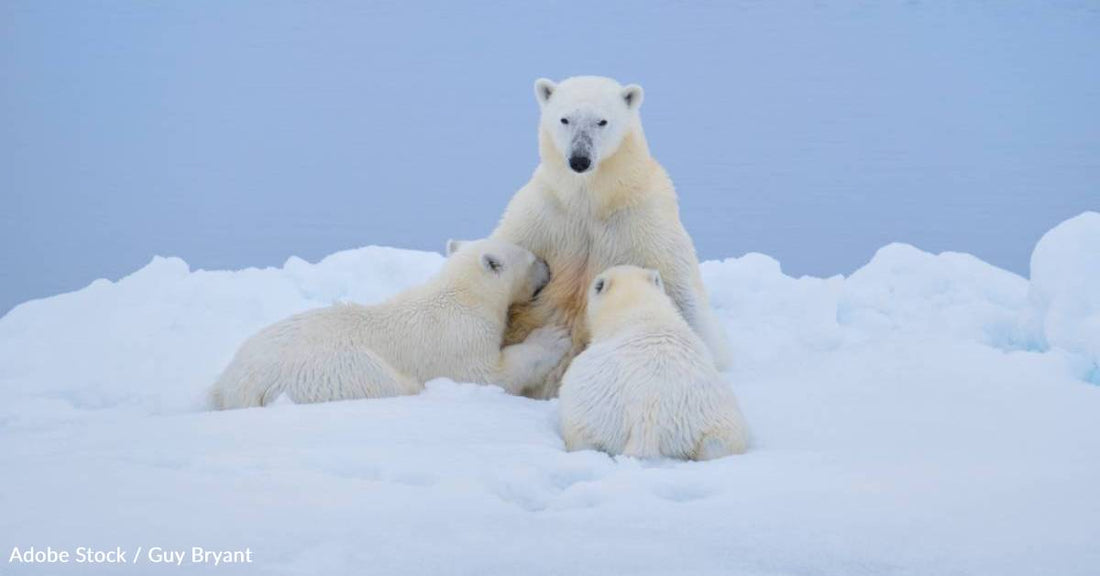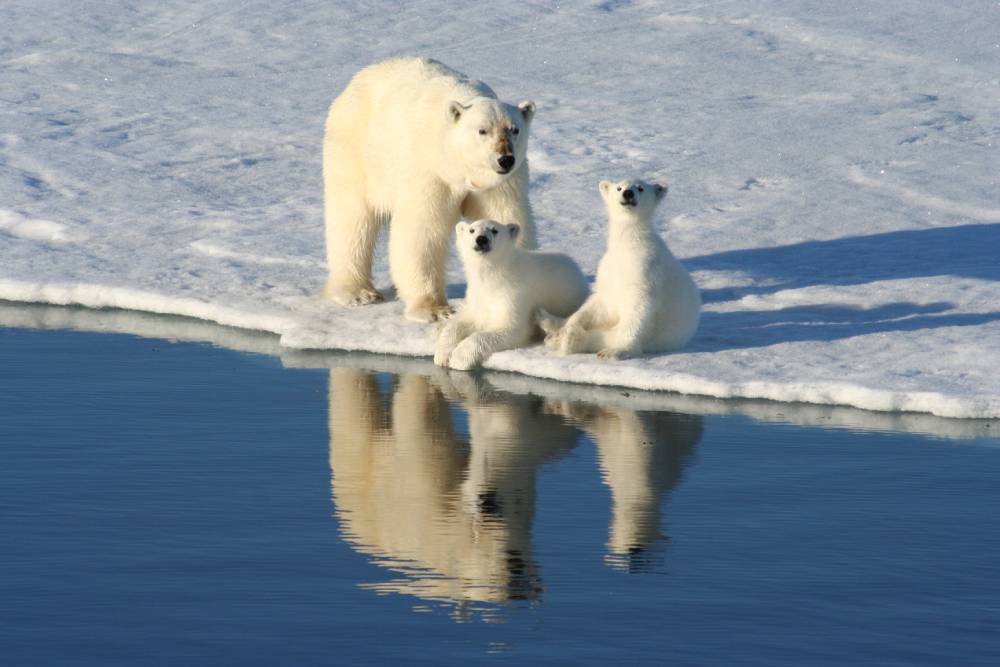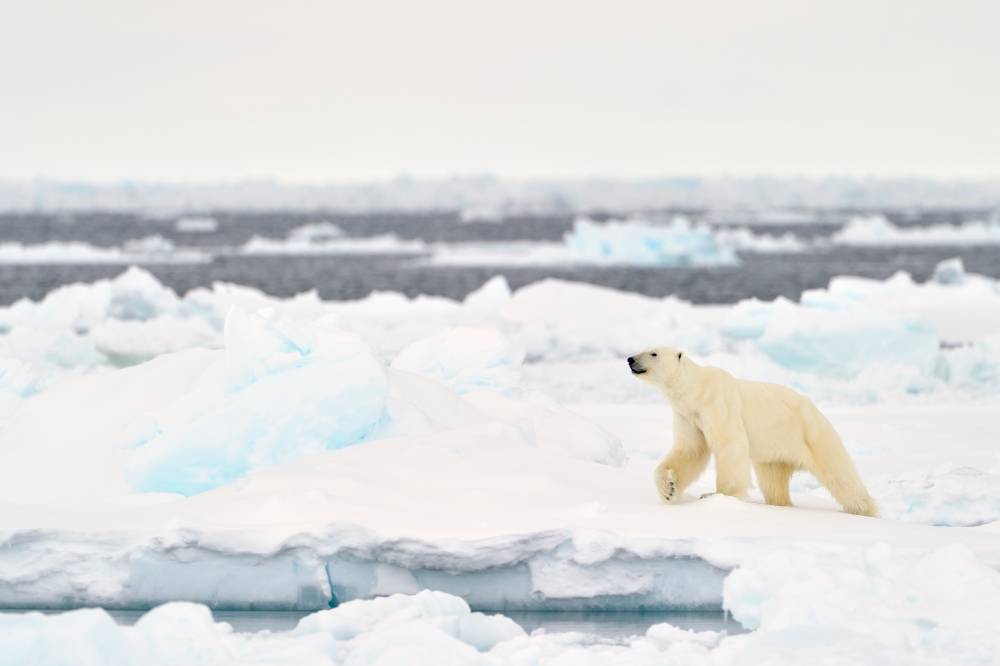7th Annual Holiday Toy & Book Event Help make the holidays brighter this year!
Their Swims Can Last for Days, and Other Interesting Facts About Polar Bears
Michelle Milliken
Polar bears – weighing in as high as 1,700 pounds and standing up to 10 feet tall – are the largest bear species. They’re found in five countries: Canada, Russia, Greenland, Norway, and the United States (in Alaska). There are about 26,000 of these bears, though their population faces challenges, primarily from climate change. On this International Polar Bear Day, held every February 27, learn more about these Arctic Circle dwellers.
They’re Not Really Hibernators
Most bears have a process to prepare for hibernation, but polar bears buck that trend. Apart from females expecting cubs, polar bears don’t really hibernate. Their lean season for food isn’t the winter. It’s the summer, when sea ice is at its lowest level and it’s harder to get their usual food sources, like seals. They’ll lose weight at this time, relying on foods like berries, eggs, or kelp.
During the winter, though, expectant mothers will enter light hibernation from roughly October through March in anticipation of their cubs. During this time, their heart rate, metabolism, and breathing rate may lower. They will give birth around December and their light hibernation state will allow them to tend to their cubs without expelling too much energy. The den is typically dug into a snowdrift.
They’re Very Motherly
A polar bear mother may be low energy when the cubs are first born, but she’ll defend them with fervor. When they come out of their den, the mother keeps a sharp eye on her cubs, making vocalizations at them to get them to return to her if they’ve wandered off. She will also fight predators to protect her young if necessary. WWF says mothers have even been observed protecting dead cubs.
Cubs will remain with their mothers, learning from them and being shielded by them, for between two and three years.
Their Milk is Extra Fatty
One way mothers ensure their cubs grow up is with their milk, which has the highest fat content of any land mammal. The milk is about 31% fat when the cubs are first born, gradually tailing off to about 18% when they reach a year old. In contrast, human breast milk is around 4% fat.
Polar bear cubs will nurse for between 1.5 and 2.5 years.
They’re Pretty Sharp
Not only are polar bears brawny, they’re brainy, too. They show a crafty side while hunting, remaining quiet and still by a seal’s breathing hole for hours at a time waiting for a seal to appear. They can also seek out and break into seal birth lairs. Another clever way they hunt? Using tools! Research has shown that they throw ice and rocks at walruses when they’re trying to make one into a meal.
It's not just hunting that displays their intelligence, though. Their playtime also does. They’ve been observed wresting with each other and sliding downhill or across the ice for fun.
They’re Well Adapted to Their Environment
They live in a harsh environment, but their bodies are built for it. They have an outer layer of transparent fur that is hollow and reflects light. Underneath, they have a dense undercoat and black skin that absorbs heat. Their paws, meanwhile, which can reach up to 12 inches across, have fur coating to protect from the cold and give them better footing. The footpads also have small, soft bumps that further help with traction, while they’re equipped with slight webbing to help them swim.
Finally, they have a several-inch-thick layer of fat just beneath their skin to help with insulation and when food pickings are slim.
They May As Well Enter Some Swimming Competitions
Michael Phelps may want to watch out because he has got some competition in the water. Polar bears can swim up to six miles per hour, which is about Phelps’ top speed. However, they can keep swimming for a while. Days, even. According to Guinness World Records, the longest continuous swim by a polar bear was 232 hours, or more than nine days. The US Geological Survey tracked the animal’s swim, which occurred in the Beaufort Sea north of Alaska. In that time, she covered 427 miles.
There’s a City Where They Rule the Roost
If you’ve ever wanted to visit a town of bears, that’s a bit strange, but there is one in Canada. Churchill, Manitoba, hosts polar bears during the summer and early fall as they wait out the low ice season on land. The town offers plenty of tourist opportunities, including boat and land tours that get you a closer look at the western Hudson Bay population, which lives about as south as you’ll find a polar bear.
To adapt to sharing their town with polar bears during much of the year, Churchill residents generally leave their car doors unlocked so people can dive in should they encounter a bear. There are also increased patrols on Halloween to make sure there aren’t any scary encounters. The town has closed its open-air dump, too.
They’re Playful
As if days-long endurance swims aren’t fun enough, polar bears enjoy themselves in other ways. As mentioned earlier, bears – even adults - will often play with each other. That can include wrestling, tackling, and chasing. They do enjoy a good slide on the ice, as was also covered before. That’s not all, though. They’ve even been seen playing with dogs. A video that went viral in 2016 shows a huge bear in Churchill playfully patting a chained dog.
They’ve Mated with Grizzlies
A grolar bear or a pizzly bear? They exist, as the result of grizzlies and polar bears mating. This is unfortunately a symptom of climate change, as decreasing sea ice means the two species are more apt to encounter each other, with polar bears spending more time on land. At the moment, these hybrids are still rare, but there’s concern that their numbers will grow as climate change worsens.
They Face Many Threats
Polar bears are among the species most associated with climate change, as receding sea ice makes their lives difficult. Earlier ice melt makes it harder to hunt, causes them to expel more energy to survive than they typically would, and possibly makes them more prone to insect-borne illnesses. The Ocean Conservancy notes that one example is the Hudson Bay bears, which are spending about 30 days more on land than they were 30 years ago. In that time, the population has gone down by about 22%.
Polar bears also face possible threats due to Arctic drilling.
If you’d like to do your part to help polar bears, consider signing this petition asking IUCN to upgrade the species' status to endangered due to climate change.











